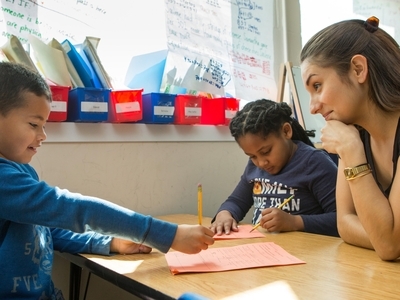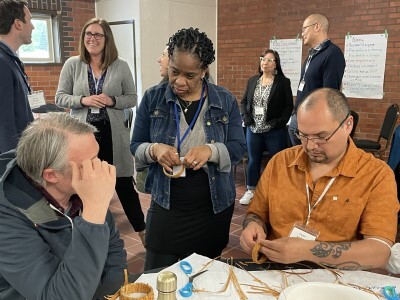NGLC Announces $12M in New Grants
Topics

Next generation learning is all about everyone in the system—from students through teachers to policymakers—taking charge of their own learning, development, and work. That doesn’t happen by forcing change through mandates and compliance. It happens by creating the environment and the equity of opportunity for everyone in the system to do their best possible work.
Today, NGLC announces its fourth wave of investments: $9 million to help launch 20 new “breakthrough” model secondary schools and $3 million to fund 30 early-stage planning efforts to design yet more of these personalized, blended, competency-based schools.
Today, NGLC announces its fourth wave of investments: $9 million to help launch 20 new “breakthrough” model secondary schools and $3 million to fund 30 early-stage planning efforts to design yet more of these personalized, blended, competency-based schools.
Wow, there’s a lot in that one sentence. Let’s parse it a bit, shall we?
First: really, what do we mean by breakthrough model schools? We use breakthrough because it makes a strong statement about the nature of the student outcomes we seek (dramatically, not marginally improved) and the degree of change in students’ learning experience we believe those outcomes require (fundamentally, not incrementally different). We also use the term because it can encompass the set of learning and school design principles we believe characterize the most promising directions in education reform today. These are summarized in the Wave IV RFP, but collectively they mean personalizing learning so that it is:
- student-centered and -owned, to meet the diverse learning needs of each student every day and to empower students with skills, information and tools they need to manage their own learning;
- competency-based, to enable students to move at their own optimal pace and receive credit when they can demonstrate mastery of high-expectations material; and
- blended, to optimize teacher- and technology-delivered instruction in group and individual work.
Moreover: our definition of breakthrough envisions that all of this can ultimately be accomplished on recurring public revenue at current or lower spend levels and can be scaled up to meet the enormous dimensions of the need.
Okay, that’s a tall order. Why do we think that investing at the school level, as opposed to the district or system level, can generate those ambitious outcomes? Change needs to happen at all levels to bring about breakthrough learning for all students. But right now, the most pressing need is to get it right at the only level where it really counts: the student level. As the ancient Asian proverb goes: “If you don’t know where you’re going, any road will take you there.” NGLC’s Wave IV grants (and Wave III before them) are aimed at helping all of us discover where we’re going, in terms of what this new, personalized, high-rigor, technology-enabled student experience of “school” looks like.
Then why so much emphasis on developing new schools? Why not allow existing schools to simply adopt the breakthrough strategies? Wave IV actually does welcome proposals from higher-performing schools that want to undertake what we’re calling “Complete Redesign,” and from districts that want to replace failing schools using the federal “Restart” provision. We hope to generate a diverse cohort of brand new district and charter schools, Complete Redesign schools, and Restart schools, all in an effort to map many pathways towards breakthrough learning. Even in the cases of Redesign and Restart schools, we do believe—and emerging evidence indicates—that the degree of change required for breakthrough learning is most effectively accomplished through a fresh start, rather than gradual migration.
Why the focus on secondary schools, as opposed to elementaries? The middle and high school years seem to be where American public school students’ academic achievement diminishes, looking at NAEP scores and outcomes in other developed nations. There appears to be more need for fundamental rethinking of our secondary models than those serving our primary and elementary-age students.
Last question: once all 20 Wave IV schools and 30 planning efforts are funded, joining the 20 Wave III secondary models already operating, how will NGLC ensure that those investments benefit the entire field? Catalyzing a diverse, compelling landscape of breakthrough model schools is only the beginning. Schools in which we have made direct investments will collectively serve just a few thousand students. But through research on what these pioneers are learning, the development of tools and other resources to help early adopters apply those lessons, community-building with other reform networks, and efforts to help our models expand rapidly themselves, we will be working hard to ensure that breakthrough learning takes place at a national scale.
The vital ingredient in all of this work, of course, is… you. Please turn to the Wave IV RFP. If you’re well down the road in designing your own breakthrough model (or will be by this fall), send us a Launch Grant application to win $450,000 in initial and matching funds. If you’re not that far along but are convinced you have what it takes to join these next gen field-builders, dream a bit about what your version of breakthrough learning might look like, and send us a proposal for a $100,000 planning grant. The deadline for the first cycle is April 22.




